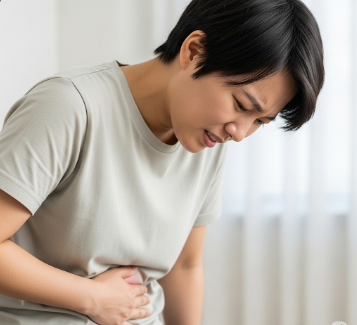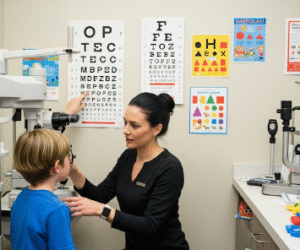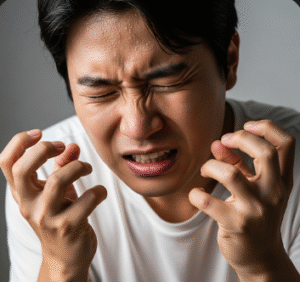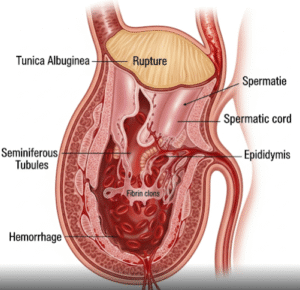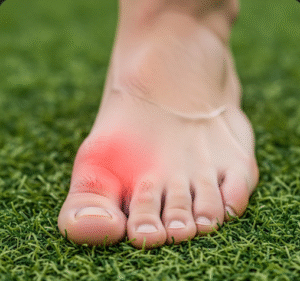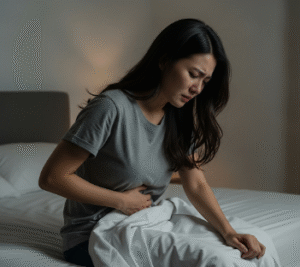Overview
Groin pain or swelling is a common symptom that affects the area where the lower abdomen meets the upper thigh. This region contains muscles, tendons, ligaments, lymph nodes, blood vessels, nerves, and reproductive organs, so pain or swelling here can result from a wide range of causes.
Groin discomfort may appear suddenly after trauma or physical exertion, or gradually over time. While minor cases often resolve with rest or conservative management, persistent pain or swelling can indicate more serious conditions such as hernias, infections, kidney stones, or tumors.
In South Korea, advanced diagnostic tools and specialized care in orthopedics, urology, and general surgery ensure accurate diagnosis and effective treatment, improving outcomes and preventing complications.
Key Facts
➲ Groin pain or swelling can result from muscle strain, hernias, infections, or reproductive system disorders.
➲ Sudden swelling may indicate emergency conditions, such as testicular torsion or incarcerated hernia.
➲ Both men and women can be affected, though the underlying causes often differ.
➲ Persistent or severe groin issues require medical evaluation to prevent complications.
➲ Korea offers high-tech imaging, minimally invasive surgery, and specialized rehabilitation programs.
What is Groin Pain or Swelling?
Groin pain or swelling refers to discomfort, tenderness, or visible enlargement in the crease where the abdomen meets the thigh. Pain may be sharp, dull, or throbbing, and swelling can range from mild puffiness to a clearly visible lump.
In men, swelling often involves the testicles or spermatic cord, while in women, it may involve lymph nodes, ovaries, or hernias. Both pain and swelling can be acute (sudden onset) or chronic (lasting weeks or months).
What Symptoms Are Related to Groin Pain or Swelling?
Symptoms vary depending on the underlying cause, but may include:
➲ Pain that worsens with movement, walking, or exercise.
➲ Visible swelling, lumps, or bulges in the groin area.
➲ Redness, warmth, or tenderness, which may suggest infection.
➲ Testicular pain, swelling, or heaviness in men.
➲ Menstrual or pelvic-related discomfort in women.
➲ Fever or chills if infection is present.
➲ Nausea or vomiting in severe cases, such as hernia or torsion.
➲ Difficulty walking or reduced hip range of motion.
What Causes / Possible Causes
Groin pain or swelling may result from multiple systems:
1. Musculoskeletal Causes
➲ Muscle strain or tear, especially in the adductor muscles.
➲ Tendon or ligament injuries.
➲ Sports hernia or athletic pubalgia.
➲ Hip joint problems such as labral tears or arthritis.
2. Hernias
➲ Inguinal hernia – tissue or intestine protrudes through the abdominal wall.
➲ Femoral hernia – more common in women, often with visible bulge and discomfort.
3. Reproductive System Causes
➲ Men: testicular torsion, epididymitis, orchitis, varicocele, hydrocele.
➲ Women: ovarian cysts, pelvic inflammatory disease, ectopic pregnancy.
4. Urinary Causes
➲ Kidney stones causing referred pain.
➲ Urinary tract infections.
➲ Bladder conditions.
5. Infection and Lymphatic Causes
➲ Swollen lymph nodes from infections or sexually transmitted infections (STIs).
➲ Abscess formation or cellulitis.
6. Other Causes
➲ Trauma or direct injury.
➲ Tumors in the groin region (rare).
When Should I See My Doctor?
Immediate medical evaluation is required if any of the following occur:
➲ Sudden, severe groin pain, especially in men (possible testicular torsion).
➲ Swelling with redness, warmth, or fever, indicating infection.
➲ A visible bulge that does not reduce when lying down (possible hernia).
➲ Persistent or increasing pain over more than a few days.
➲ Difficulty walking or bearing weight.
➲ Nausea, vomiting, or abdominal pain associated with groin symptoms.
Early diagnosis is crucial to prevent complications such as permanent tissue damage, infertility, or intestinal obstruction.
Care and Treatment
Treatment depends on the underlying cause and severity.
1. Home and Supportive Care
➲ Rest and avoid activities that aggravate the area.
➲ Apply ice for acute injuries to reduce swelling.
➲ Gentle stretching or physical therapy for mild muscle strain.
2. Medications
➲ NSAIDs for pain and inflammation.
➲ Antibiotics for bacterial infections.
➲ Pain management for chronic conditions or post-surgery recovery.
3. Surgical and Procedural Treatments
➲ Hernia repair (open or laparoscopic).
➲ Testicular torsion surgery to prevent permanent damage.
➲ Drainage of abscesses or cyst removal.
➲ Arthroscopic or hip joint procedures if musculoskeletal issues are involved.
4. Rehabilitation and Follow-Up
➲ Physical therapy to restore strength and flexibility.
➲ Gradual return to sports or physical activity.
➲ Long-term monitoring for recurrent hernias or chronic conditions.
Treatment Options in Korea
South Korea is recognized for advanced surgical care, precise diagnostics, and minimally invasive procedures for groin-related conditions.
Diagnosis in Korea
➲ High-resolution ultrasound to assess soft tissue, hernias, or lymph nodes.
➲ MRI or CT scans for detailed evaluation of muscles, joints, and organs.
➲ Specialized urology and gynecology assessments for reproductive causes.
➲ Blood and urine tests for infections or systemic conditions.
Medical Treatments in Korea
➲ Targeted antibiotics for infections.
➲ NSAID therapy and physical therapy for musculoskeletal causes.
➲ Nutritional counseling and lifestyle guidance to prevent recurrence.
Surgical and Advanced Therapies
➲ Laparoscopic or robotic-assisted hernia repair.
➲ Testicular or ovarian surgeries for torsion or cysts.
➲ Arthroscopic hip procedures for athletes or joint-related pain.
Rehabilitation and Support
➲ Multidisciplinary rehabilitation programs.
➲ Sports medicine clinics for athletes.
➲ Follow-up programs with digital monitoring to track recovery.
Quick Highlights Box
➲ Groin pain or swelling can result from muscle strain, hernia, infection, or reproductive system issues.
➲ Sudden, severe pain may indicate testicular torsion or incarcerated hernia—emergency care required.
➲ Common symptoms include pain, visible lumps, tenderness, and limited mobility.
➲ Korea provides advanced imaging, minimally invasive surgery, and multidisciplinary care.
➲ Early evaluation prevents complications like tissue damage, infertility, or bowel obstruction.
➲ Treatment options include rest, medications, surgery, and rehabilitation programs.

